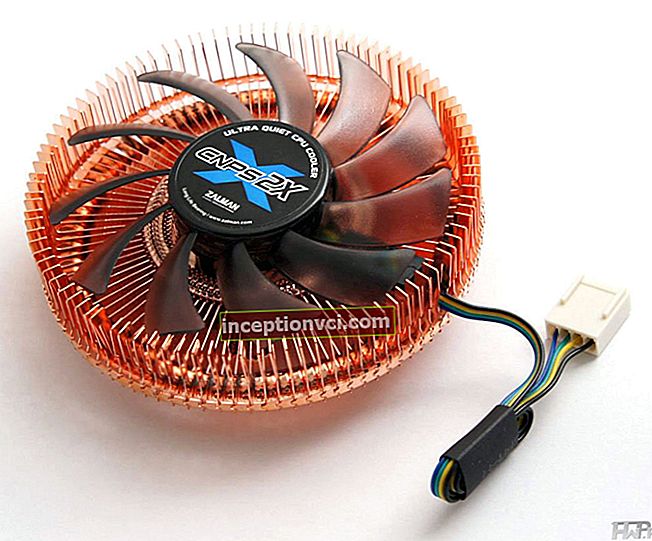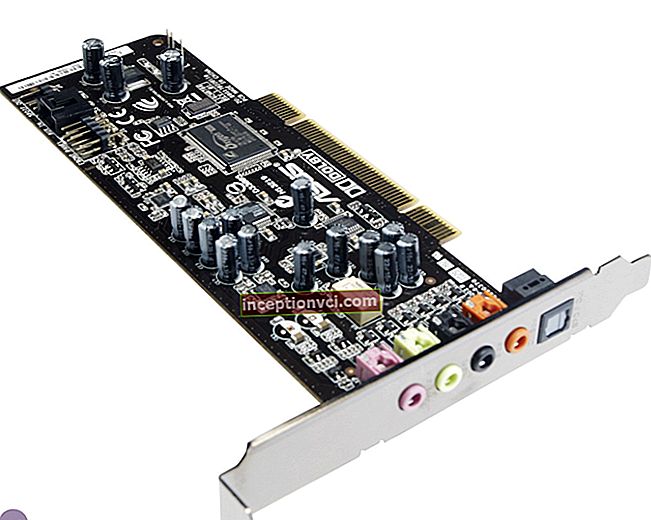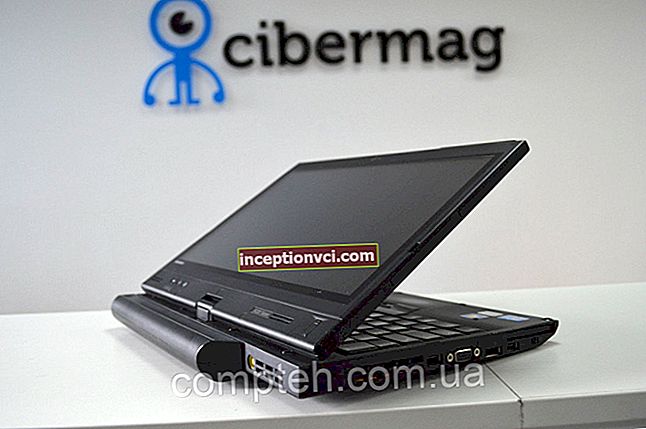Wi-Fi ROUTERS IEEE 802.11n STANDARD
In the case of local area networks, the saying “the further into the forest, the thicker the guerrillas” has acquired a new meaning. As you know, progress does not stand still, and as the era of lamps and transistors passed, so now the era of wired networks is leaving. Wireless networks allow the user to get rid of the old inconvenient and cumbersome cable networks, and in return, to get small, convenient devices that will similarly support several computers at the same time. At the moment, more and more new models of Wi-Fi routers appear that can significantly increase the speed of your home network, since they work on IEEE 802.11n, of course this transition is very attractive, but as always there is, but compliance factors should be taken into account. There is one more thing, but not only your friend computer and router must cope with this protocol. Make sure that the provider to which you are connected also allows working with the IEEE 802.11n standard. Let's try in this review to slightly ease the task when choosing a router and give several tests for a number of models.
VERIFICATION METHODS
This test is a three-level check:
First level: All models of routers were connected in turn by two computers using a wired connection type (LAN port) for the first machine, and using a wireless connection (WAN) for the second machine, the connection type that was set for the router is static, with a constant IP address. Then the data transfer began, both alternately and (Full Duplex) simultaneously, from one to another. This approach allows you to fairly accurately determine the data transfer rate over the local network (NAT operability).
Second level: After that, using the WAN, the PPTP connection type is configured on the router, since it is the least resource-intensive in terms of using the router's resources, which is why this type of connection is used.
Third level: To test the wireless network, files were transferred from the computers of the wireless network to the switch of the router, the distance was from 1 to 6 meters. It should also be noted that there were obstacles between the equipment under test and the computers, and there were concrete walls. Encryption type used: WPA2-PSK with AES key.
D-Link DIR-615

Overall rating: 6
Router Features:
Interface type: 4xLAN, 1xWAN (RJ-45)
Wireless Specifications Wi-Fi: iEEE 802.11n + IEEE 802.11 b / g
Frequency range: 2.4 ... 2.5 GHz
Security types: WPA / WPA-PSK, WEP (up to 128 bit), WPA2 / WPA2-PSK (TKIP, AES)
Router Functions: DHCP, EZQoS, DynDNS, NAT / NAPT, Static Routing, IGMP Multicast
Firewall functions: DMZ, VPN Path-trough, URL Filter, SPI, MAC Filter, Packet Filter
Types of available connections: IP address static and dynamic, PPTP, PPPoE, L2TP
Features: WPS
Positive sides: This router is simple and inexpensive, which is why it does not really stand out in functionality, but you will find all the functions you need here. An important fact is that the developers have implemented support for the connection on the WAN - port - if there is an established VPN connection on the router, it will be possible to access the local network of your Internet service provider. Previously, a fairly large number of models faced this problem, but here in the list of supported connections you can easily select Russia PPPoE, Russia L2TP, Russia PPTP. It should be noted that there is support for the task of the VPN server address by letter, not by IP. This model has shown more than satisfactory performance. The interface of this model is very convenient and accurate, the most complex settings have been removed or moved to specific attachments. The functionality allows you to make a large number of settings and filters, as well as improve the quality of games over the network using the QoS function. IGMP Multicast support is also a feature of D-Link DIR-615.
Negative sides: Considering the low selling price of this router, the price-performance ratio is very satisfactory. The disadvantages of this device, albeit with a stretch, include the lack of USB ports.
D-Link DIR-655

Overall rating: 9
Router Features:
Interface type: 4xLAN, 1xWAN (RJ-45)
Wireless Specifications Wi-Fi: iEEE 802.11n + IEEE 802.11 b / g
Frequency range: 2.4 ... 2.5 GHz
Security types :), WPA / WPA-PSK, WEP (up to 128 bit), WPA2 / WPA2-PSK (TKIP, AES
Router Functions: DHCP, QoS, DynDNS, NAT / NAPT, Static Routing, IGMP Multicast
Firewall functions: Access Control, VPN Path-trough, URL Filter, SPI, MAC Filter, IP Filter
Types of available connections: IP address static and dynamic, PPTP, PPPoE, L2TP
Features: WPS, USB 2.0 port
Positive sides: This gigabit router has shown itself to be excellent in NAT performance tests and using PPTP connection type. You will be pleasantly surprised by the data transfer speed in the wireless network. The fact that the manufacturer has provided a program code focused on Russian types of PPPoE, PPTP and L2TP connections will not disappoint either, and of course it is possible to set the server address symbolically. Note the fact that setting up the device with a subsequent reboot takes place quite quickly, it is, of course, convenient, and in general, a pretty good interface. The existing USB port has specific features, since, in addition to connecting an external HDD or other devices, it is possible to connect a 3G adapter to access this type of networks using the D-Link DIR-655. It should also be noted that the router has such a useful Protected Setup function for a Wi-Fi network (which can reduce the wireless network setting to pressing a few buttons), there are various filters to restrict access, QoS Engine (will make it possible to provide the necessary speed for network games) , WISH (allows you to prioritize traffic in the wireless network), there is also IGMP Multicast support.
Negative sides: No significant flaws were found during testing. However, working with external storage devices connected to USB leaves much to be desired, this can be explained by raw firmware, it is quite possible that new software will appear in the near future in which these holes will be patched.
D-Link DIR-855

Overall rating: 9
Router Features:
Interface type: 4xLAN, 1xWAN (RJ-45)
Wireless Specifications Wi-Fi: iEEE 802.11n + IEEE 802.11 b / g
Frequency range: 2.4 ... 2.5 GHz
Security types: WPA / WPA-PSK, WEP (up to 128 bit), WPA2 / WPA2-PSK (TKIP, AES)
Router Functions: DHCP, DynDNS, NAT, Static Routing, QoS
Firewall functions: VPN Path-trough, URL Filter, SPI, MAC Filter, IP Filter
Types of available connections: IP address static and dynamic, PPTP, PPPoE, L2TP
Features: WPS, USB 2.0 port, LCD display.
Positive sides: If we compare this router with appponents, then this is most likely a tractor, otherwise there were cars and gazelles. If you need a powerful device, then this is your choice. The design feature is also the liquid crystal display, which is located on the top panel of the router. In fact, this is a monitor that fully describes the operation of the device, as well as its state, this can save the user from having to go to the web interface. However, this model is characterized not only by this distinctive feature. The D-Link DIR-855 model can operate not only in the traditional frequency range for 2.4 ... 2.5 GHz wireless networks, but also at a frequency with a lower load of 5 GHz, this will certainly have a positive effect on performance. Of course, a wireless network can operate on both bands at the same time. In testing, we used 5 GHz and the device performed amazingly, the best for our test, results. It should also be noted that in the D-Link DIR-855 model all Ethernet ports are gigabit, this router was really able to demonstrate the best LAN-WAN throughput. Among other things, do not forget about the presence of a USB port, it can be used to transfer Wi-Fi settings, and in addition to use the router as a print server or to connect an external HDD, but there is also, but access to storage devices is not implemented at the level, you have to use an external utility.
Negative sides: The main drawback in our opinion is the overpriced for this model, since it is a router for a home network.
ASUS RT-N13U

Overall rating: 7
Router Features:
Interface type: 4xLAN, 1xWAN (RJ-45)
Wireless specifications: Wi-Fi: iEEE 802.11n + IEEE 802.11 b / g
Frequency range: 2.4 ... 2.5 GHz
Security types: WPA / WPA-PSK, WEP (up to 128 bit), WPA2 / WPA2-PSK (TKIP, AES)
Router Functions: DHCP, EZQoS, DynDNS, NAT / NAPT, Static Routing
Firewall functions: URL Filter, SPI, MAC Filter, Packet Filter
Types of available connections: IP address static and dynamic, PPTP, PPPoE, L2TP
Features: WPS, WAN Bridging, USB Port, AiDisk, Print Server
Positive sides: It should be noted that the ASUS RT-N13U model has a number of distinctive characteristics in comparison with the earlier models without the letter "U" in the marking. The exterior is distinguished by the fact that the case is lower and monolithic, it is not placed on a stationary stand, but the main functional innovation is the presence of a USB port. ASUS stated that the router, in addition to its direct functions, can also perform the function of a print server; to install a network printer, you should use the software supplied with the device, which will allow you to work with most printers on the market today. In addition, the USB port can be used to connect an external hard drive, in this case the router is used in the same way as a database with shared FTP access. I would also like to note that if there is a Download Master software installed on your personal computer, the device can function as a database for downloads, the download will be carried out according to the HTTP, FTP or BitTorrent protocols. I would also like to note the convenience of the web interface, which has a large number of tips, you will be pleased with an impromptu graphical network map on which the found problems are indicated. Thanks to some features of the device, the configuration of support for WPS technology is also greatly simplified. According to the application from ASUS, the device allows you to work as: a router, a duplicate device, as well as an access point, the convenience is also the fact that the switching can be carried out both programmatically directly from your workplace, and directly using the switch located on the case.
Negative sides: But as they say, there is nowhere without flaws, the ASUS RT-N13U model, like its predecessor ASUS RT-N13, has a low data transfer rate, working with PPTP connection, the shift in the positive direction is not very significant.
ASUS RT-N16

Overall rating: 8
Router Features:
Interface type: 4xLAN, 1xWAN (RJ-45)
Wireless Specifications Wi-Fi: iEEE 802.11n + IEEE 802.11 b / g
Frequency range: 2.4 ... 2.5 GHz
Security types: WPA / WPA-PSK, WEP (up to 128 bit), WPA2 / WPA2-PSK (TKIP, AES)
Router Functions: DHCP, EZQoS, DynDNS, NAT / NAPT, Static Routing
Firewall functions: URL Filter, SPI, MAC Filter, Packet Filter
Types of available connections: IP address static and dynamic, PPTP, PPPoE, L2TP
Features: WPS, EZSetup, WAN Bridging, UPnP Media Server, 2 USB 2.0 ports, AiDisk
Positive sides: The ASUS RT-N16 brand router is a monster among its analogues, its almost army internal filling can horrify any specialist from the service center, which is only the Broadcom BCM4718 chip, which operates at a clock frequency of 533 MHz. We also note the presence of 128MB DDR2 RAM, so this model can cope with a fairly heavy load. Note that both the WAN and LAN ports of the router are gigabit, however, NAT performance during data transfer over the WAN during testing was not higher than 145Mbps. The device has as many as two USB ports on board, they can be used to solve a fairly wide range of tasks. One of these tasks can be the organization, with an available print server, network access to a shared printer or other multifunctional device. In addition, the ASUS RT-N16 router, as in the previous case, can perform the function of a network database for storing data, when connecting an external HDD, it should be noted the possibility of self-recording files using the supported protocols HTTP, FTP, as well as BitTorrent. Access is possible according to SMB or FTP, while the AiDisk function makes it possible to create an FTP server that will be accessible from the Internet.The interface of the router is one of the most convenient and adapted for virtually all user categories: there is support for automatic configuration of the WPS wireless network, and convenient configuration of priorities for EzQoS traffic is also implemented. There is also a positive moment for people who prefer to watch TV shows on TV, and the names are mirror relay from the WAN directly to the IPTV set-top box. The router supports most of the required connection types for WAN ports, as well as all the necessary settings when working with Ukrainian companies providing Internet services.
Negative sides: This model has a higher performance for the PPTP protocol than the ASUS RT-N13U, however, it is still lower than the speed of the other participants.
NETGEAR WNR-2000

Overall rating: 7
Router characteristics:
Interface type: 4xLAN, 1xWAN (RJ-45)
Wireless Specifications Wi-Fi: iEEE 802.11n + IEEE 802.11 b / g
Frequency range: 2.4 ... 2.5 GHz
Security types: WPA / WPA-PSK, WEP (up to 128 bit), WPA2 / WPA2-PSK (TKIP, AES)
Router Functions: DHCP, QoS, DynDNS, NAT / NAPT, Static Routing, UPnP
Firewall functions: Keyword Blocking, VPN Path-trough, URL Filter, SPI, MAC Filter, IP Filter
Types of available connections: IP address static and dynamic, PPTP, PPPoE, L2TP
Features: WPS, traffic counter.
Positive sides: This inexpensive router has shown a very good performance in PPTP connection type, which is known to suit the majority of users. Some types of NETGEAR models are known to have a problem with supporting two or more connections on WAN ports (in cases of simultaneous attempts to gain access to both the local network and the Internet with a VPN type of connection). Note that for the NETGEAR WNR-2000 model this problem has been completely resolved. The router works with providers from Russia, as they know it is very important for them. The features of this model include a built-in counter for traffic, which will undoubtedly allow it to be controlled, and, accordingly, to terminate the connection in a timely manner, which will allow you not to go beyond the limit at the tariff corresponding to your choice. In addition, the user can configure a priority queue for traffic, block sites by name, as well as some services. Blocking can also be carried out according to the schedule. As you know, most of the recently released models, including NETGEAR WNR-2000, are equipped with a WPS button. We also note the fact that you can adjust the power of the Wi-Fi network by limiting the speed to 54 Mb / s or 145 Mb / s (note that the maximum speed is 300 Mb / s), this reduces the impact on connections in the wireless network. Among other things, this model has a very attractive appearance.
Negative sides: The disadvantages of the model are the lack of support for L2TP connections, a rough and not very convenient web interface. In addition, the speed of the Wi-Fi network could be higher.
NETGEAR WNR-3700

Overall rating: 8
Router characteristics:
Interface type: 4xLAN, 1xWAN (RJ-45)
Wireless Specifications Wi-Fi: iEEE 802.11n + IEEE 802.11 b / g
Frequency range: 2.4 ... 2.5 GHz, 5 GHz
Security types: WPA / WPA-PSK, WEP (up to 128 bit), WPA2 / WPA2-PSK (TKIP, AES)
Router Functions: DHCP, QoS, DynDNS, NAT / NAPT, Static Routing, IGMP Multicast
Firewall functions: Access Control, VPN Path-trough, URL Filter, SPI, MAC Filter, IP Filter
Types of available connections: IP address static and dynamic, PPTP, PPPoE, L2TP
Features: WPS, traffic counter
Positive sides: This is another of the family of Dual Band routers, which allows you to create a pair of wireless networks at the same time using different frequencies (note that for each network you can set personal settings). But testing was carried out at a standard frequency - 2.4 GHz, this was due to the lack of a suitable adapter (made by NETGEAR). The performance results obtained for the wireless network can be classified as average, NAT performance, as well as the data transfer speed using PPTP connection type is beyond praise - the router is called gigabit for a reason.It is also possible to choose one of three operating modes in a wireless network: 54 Mb / s, 145 Mb / s and 300 Mb / s. According to the intention of the manufacturer, if you do not need the maximum speed for work, you can choose 145 Mb / s mode, which will reduce the impact on connections in the wireless network. The device is equipped with a USB port that can be used to connect an external HDD or other multifunctional devices. A nice feature is the ability to support the DLNA protocol by the router.
Negative sides: The web interface of this router is not an open book, rather it is a puzzle, but there are not so many parts, so if desired, the user can easily figure it out. Pay also attention to the absence of the L2TP protocol, which is important for users from the CIS.
TRENDnet TEW-652BRP

Overall rating: 7
Router characteristics:
Interface type: 4xLAN, 1xWAN (RJ-45)
Wireless Specifications Wi-Fi: iEEE 802.11n + IEEE 802.11 b / g
Frequency range: 2.4 ... 2.5 GHz
Security types: WPA / WPA-PSK, WEP (up to 128 bit), WPA2 / WPA2-PSK (TKIP, AES)
Router Functions: DHCP, QoS, DynDNS, NAT / NAPT, Static Routing, IGMP Multicast
Firewall functions: Access Control, VPN Path-trough, URL Filter, SPI, MAC Filter, IP Filter
Types of available connections: IP address static and dynamic, PPTP, PPPoE, L2TP
Features: WPS
Positive sides: Despite the fact that the TEW-652BRP model is the cheapest of the monitored and the smallest in size, this router in this review was able to demonstrate quite high performance indicators both in working conditions using a Wi-Fi network and in conditions of LAN data transmission - WAN, as well as using the PPTP protocol. This functionality may well suit the majority of users dealing with small local area networks. This router is equipped with a simple and pleasant, no-nonsense interface. Along with the usual types of connection, the developer has provided for Russia PPPoE, as well as Russia PPTP, which allows, along with access to the Internet, to have access to the local network of the service provider's company. Naturally, it is possible to set the VPN server address in letter format, since some Internet service providers enter the server name directly, and the IP address can be dynamic. The router has a function to restrict access by URL, MAC, and IP address. Additional features that make life easier for the user can also be attributed to the presented Wi-Fi Protected Setup (WPS).
Negative sides: This model is actually flawless for this price category, but users may be unhappy with the low functionality, for example, the lack of traffic prioritization.
CONCLUSION
According to the test results, one can say with certainty that finding the optimal balance between the available characteristics and the price category is a very difficult task. Despite the fact that some of the models in question do not perform very well in testing the wireless network, they nevertheless coped well with other tasks. Tes showed that the D-Link DIR-655 router performed better than all the others from the group, the price-quality ratio for this model allowed it to give it the maximum score. However, the last one in the review, but not on the counter, is TRENDnet's TEW-652BRP model, as it is simply an excellent budget employee with very good performance parameters.









